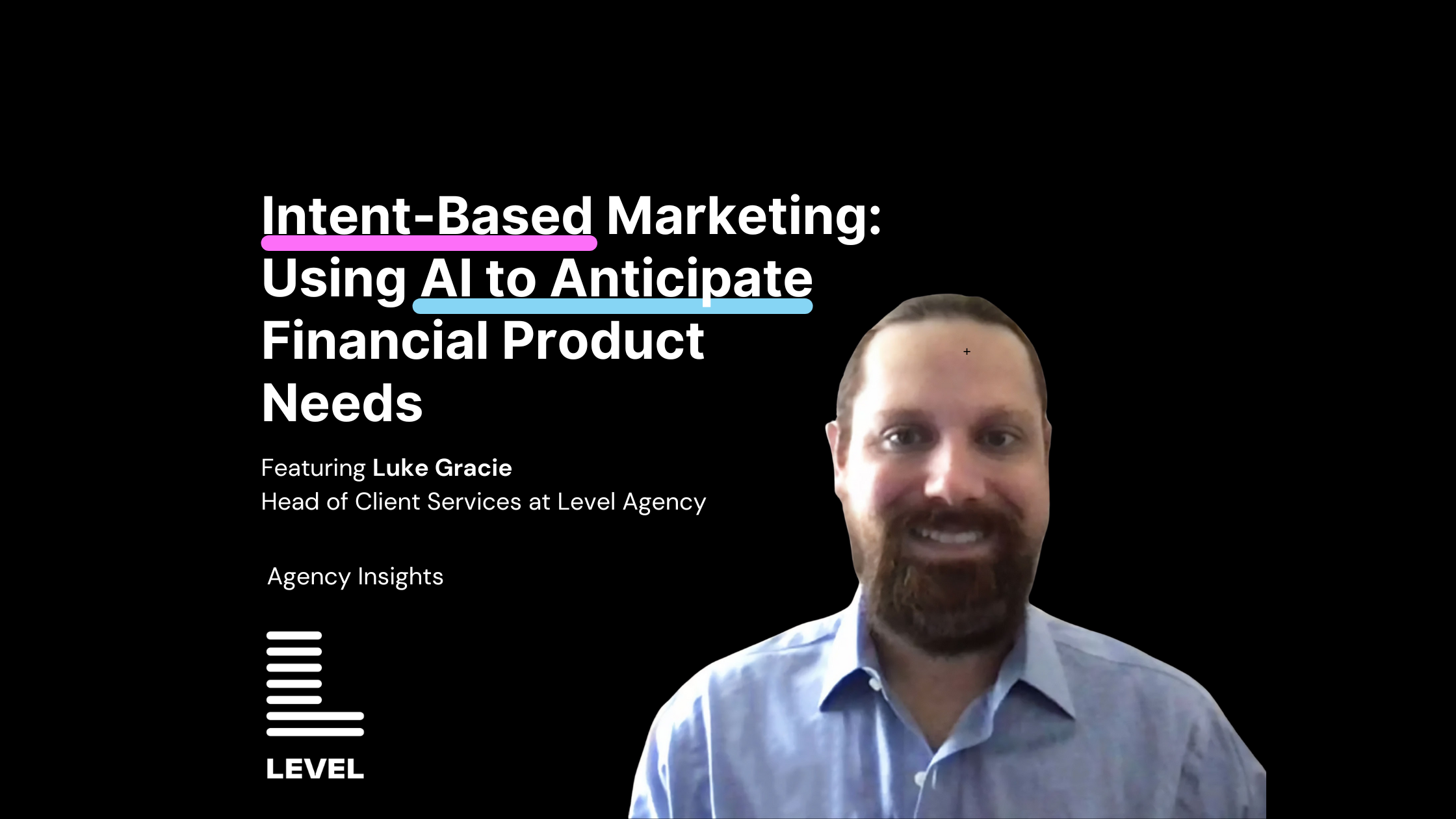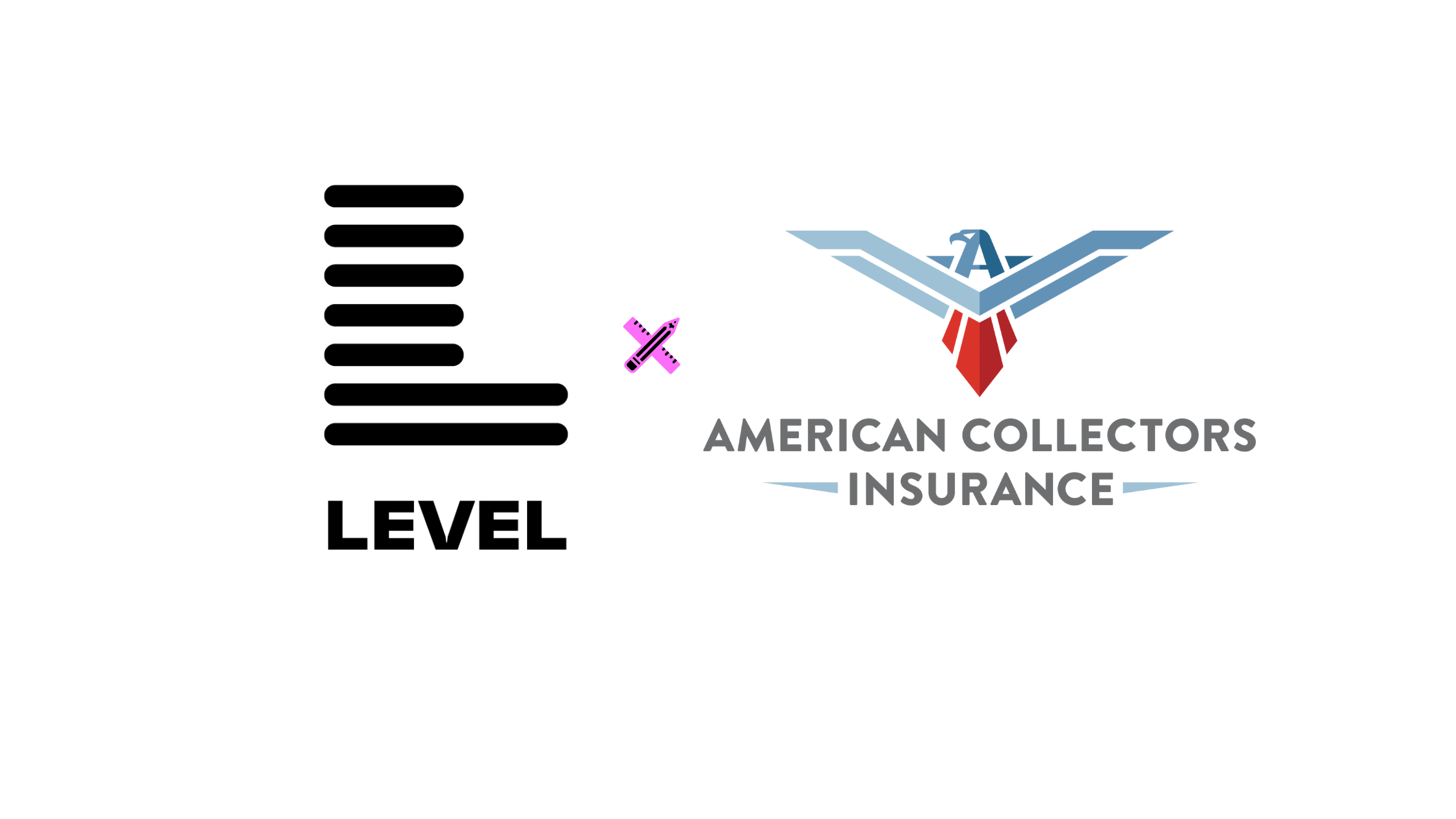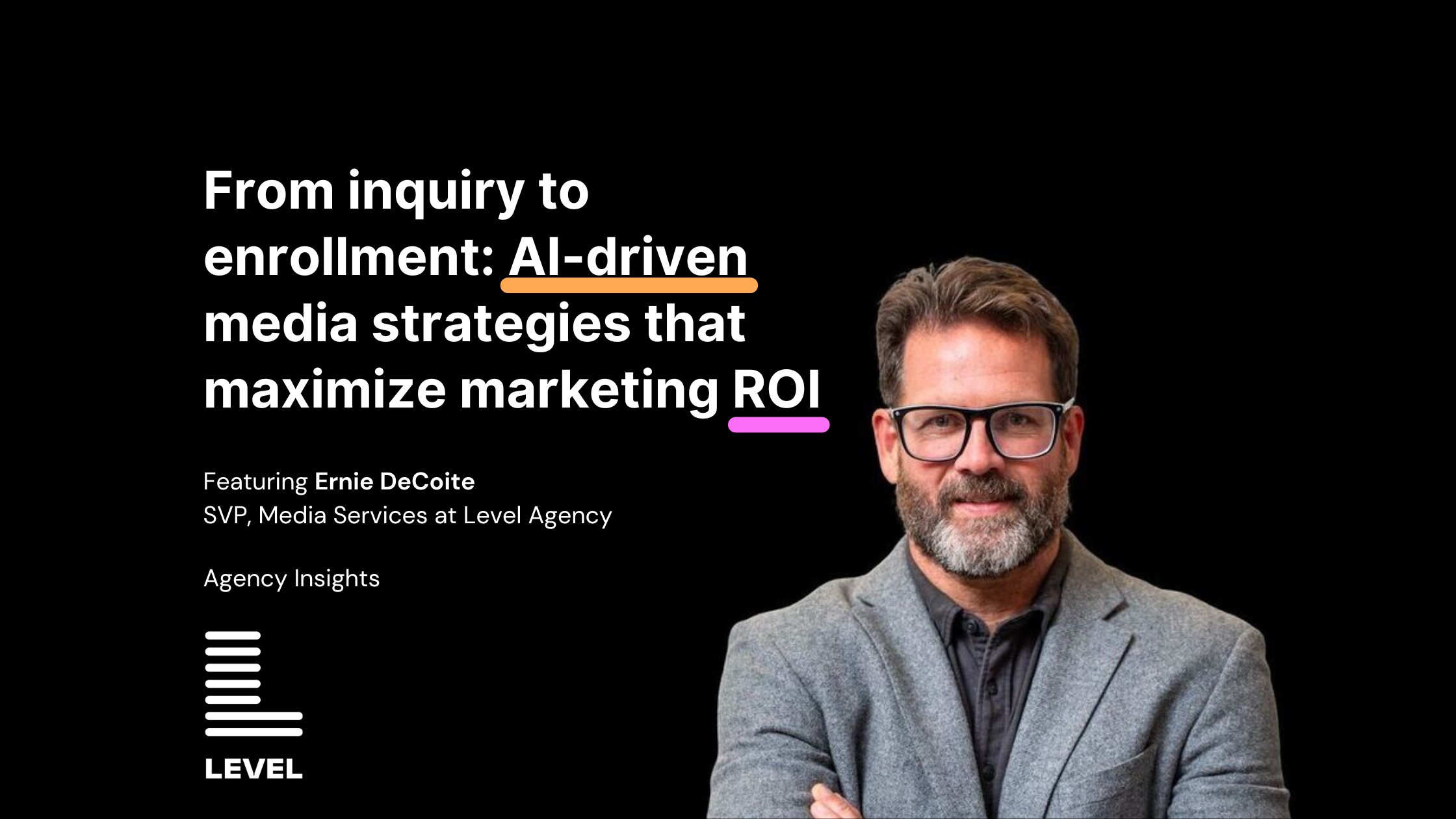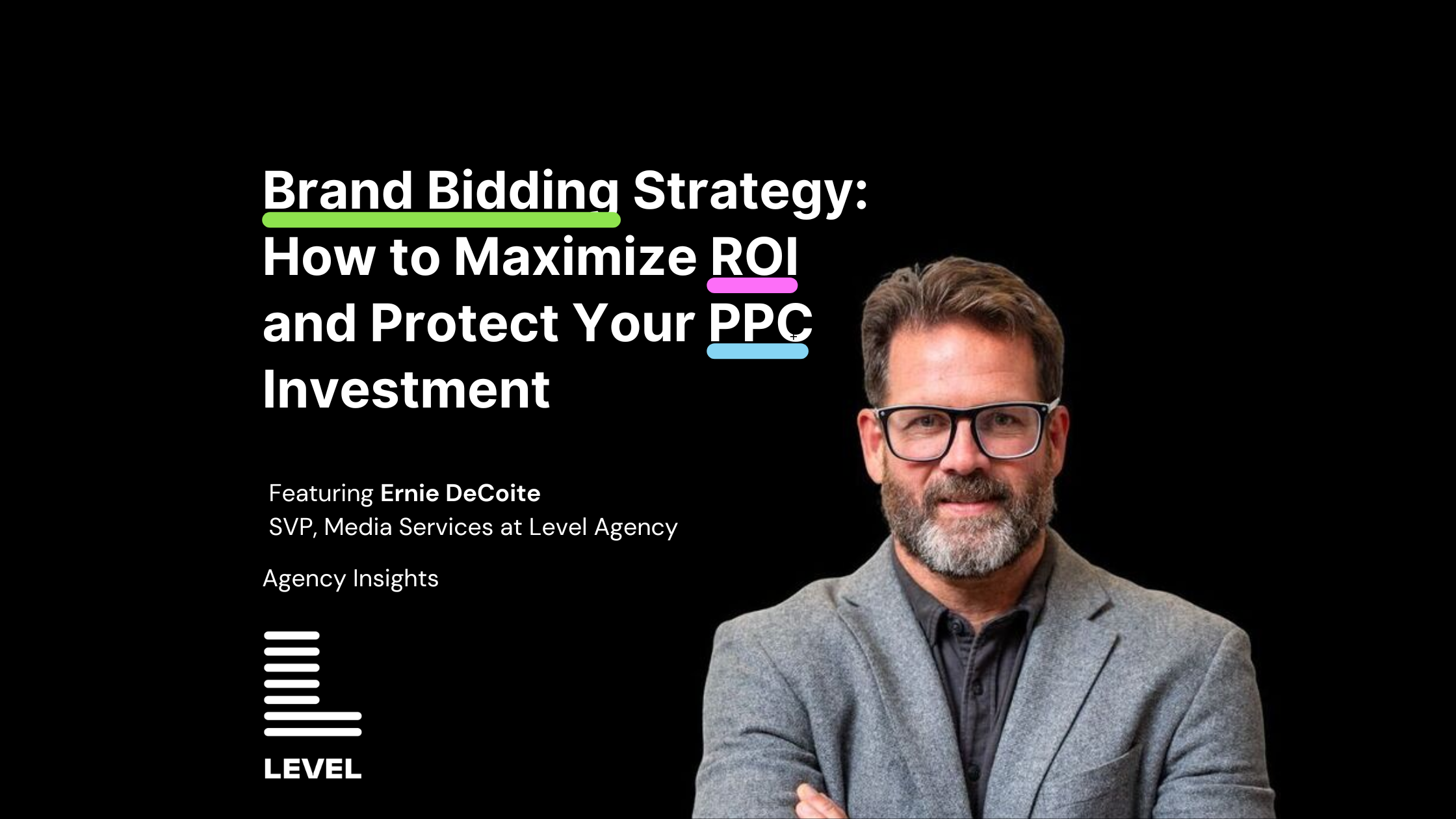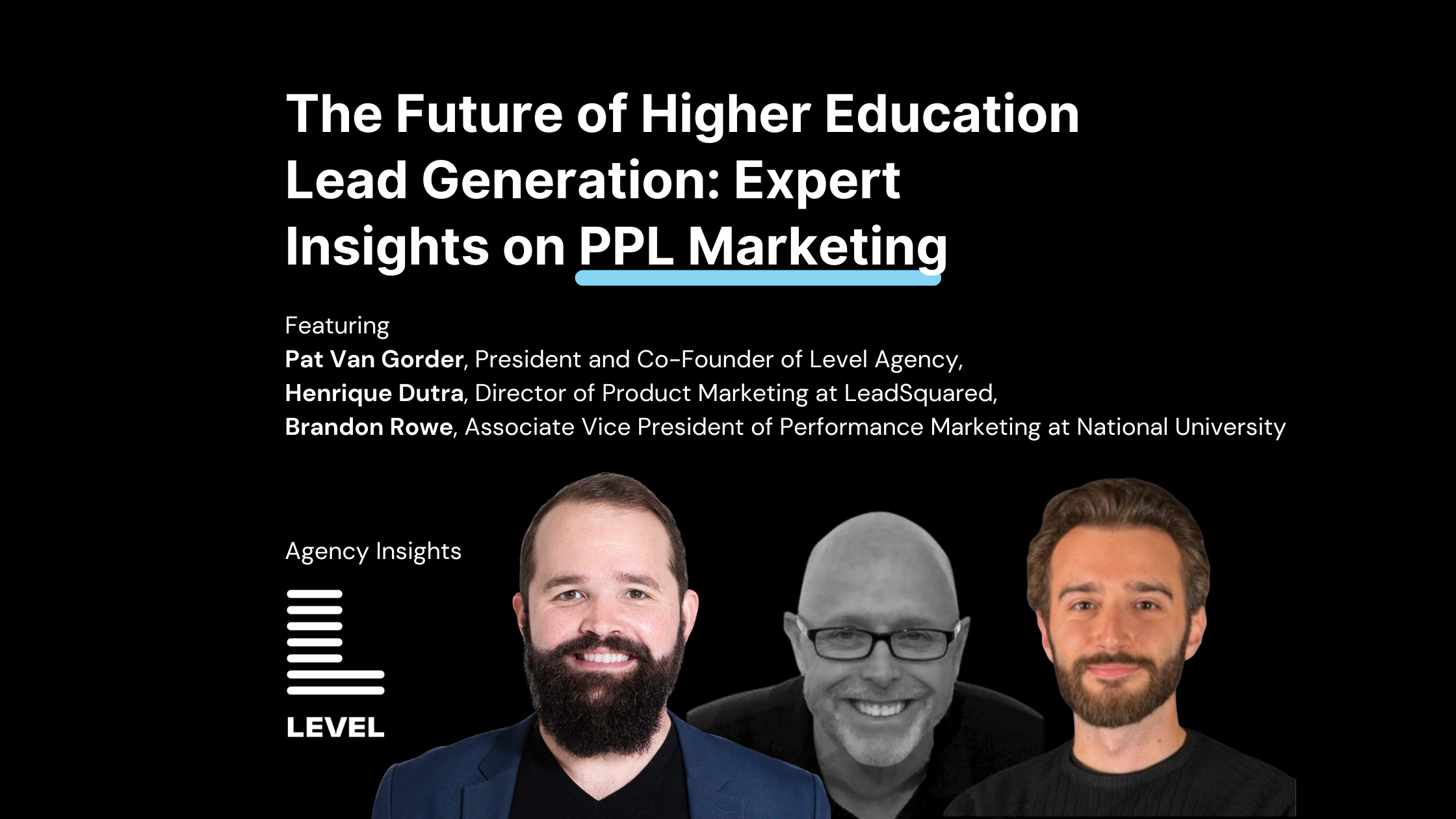In a recent interview with Luke Gracie, Head of Client Services at Level Agency, we explored how intent-based marketing works in the financial services sector. The conversation centered on how AI and data signals are transforming financial services marketing strategies, enabling firms to reach prospects who are not only interested but also ready to act.
This blog offers practical insights for marketers on identifying high-intent lead generation opportunities, structuring funnels for improved conversion, and leveraging AI for smarter decision-making.

Why are behavioral signals more powerful than static lists in predictive marketing?
In the past, financial services marketers found success using lists appended with intent signals. These lists, often derived from third-party data, indicated behaviors like recent credit card applications or debt accumulation. However, as platform algorithms and privacy regulations evolved, these methods began to show limitations, especially in digital environments.
This includes everything from website visits to search history. Platforms like Facebook, with their vast troves of user attributes, can then serve ads to the right users even without explicit targeting.
What does an Intent-optimized funnel look like from Ad to conversion?
The process starts with clarity on the ideal customer. That requires digging into the CRM to identify attributes of not just leads, but high-quality leads who ultimately convert. These individuals may be planning to buy a home within a specific timeframe, hold a certain number of credit cards, or meet specific financial criteria.
These attributes should be reflected in ad copy and reinforced on landing page forms. Platforms can’t target credit score or income directly, but they can learn from the post-conversion data we send back. If a credit check confirms someone is a strong prospect and we post that conversion back, platforms begin to optimize for more users who behave similarly online.
The real power comes from sending data from converted customers, such as those who’ve completed a lead form or application, back into the ad platforms. This provides higher fidelity learning models. But it’s a balancing act: enough quality signals must be sent within attribution windows to be effective.
Facebook, for instance, performs best with 50 qualified conversions per ad set per week. Google needs 30 per campaign per month. That’s why we consolidate campaigns and lean into value-based bidding strategies, so learning isn’t diluted.
Does intent based marketing work for wealth management firms, too?
Wealth management firms often target ultra-high-net-worth individuals, which introduces a different challenge: signal scarcity. They typically receive only 50–100 leads a month. That limited volume makes platform learning more difficult.
That’s where precision in creativity becomes critical. If an ad explicitly calls out, “mistakes people with $750M net worth need to avoid,” it instantly filters out the wrong audience and resonates with the right one. Fewer leads but the right ones. In this case, creativity serves as a pre-qualification filter.
For additional reach, tools like Windfall help identify and connect with high-net-worth individuals beyond standard targeting methods. So yes, it’s applicable, but creative targeting and data augmentation become even more essential.
What are the best practices for scalable high-intent lead generation?
One of the biggest mistakes is misaligning the level of urgency with the type of offer. Debt relief products, for example, tap into a high-stress scenario. Someone drowning in credit card debt and seeing a 23-year payoff timeline is ripe for a direct-response offer. That moment demands urgency. You go right for the jugular.
In contrast, wealth management is a trust game. No one with significant assets is going to convert on a first click. They need nurturing. That’s where educational content works: ebooks, webinars, and email series. Marketers sometimes try to sell immediately when they should be educating, or they drag out the funnel when urgency is warranted.
Another common misstep is treating all leads equally. If a platform receives unfiltered conversion signals, it will optimize for volume, not quality. Only sending conversion signals for qualified leads teaches the system what “good” really looks like.
Finally, creative stagnation kills performance, especially on Facebook. You need to test constantly. And you can’t let brand guidelines smother direct-response tactics. Affiliates win because they’re unconstrained—they speak directly to pain points. Brands should learn from that approach.
How does AI make financial services marketing smarter and faster?
AI is rocket fuel. Its biggest value lies in powering the ad platforms by giving them the right signals whether those are conversion events or behavioral triggers. But it also accelerates creative iteration. AI tools can churn out copy, concepts, and visual variants faster than human teams alone. That speed matters when you need to match market pace.
Beyond execution, AI enhances strategy. It turns your CRM into a research hub. Analyzing anonymized data through models like ChatGPT or Gemini helps surface patterns that traditional focus groups would miss. It elevates segmentation, streamlines messaging, and improves targeting logic.
It’s not about replacing human strategy, but about augmenting it. Smart use of AI shortens learning cycles and sharpens every step of the funnel. Ignore it, and you’re moving too slow.
What metrics prove that intent based marketing is working?
Initially, your cost per lead may rise. That’s okay, it’s not the most important metric. The real goal is lowering your cost per qualified lead or cost per revenue-generating outcome.
For instance, a debt consolidation firm might pay more per lead, but those leads have higher debt loads, qualify more easily, and convert at higher rates. Mortgage lenders might see better loan file completions, even if front-end lead costs increase.
You’re also reducing downstream inefficiency. Fewer dead-end leads means less wasted time for call centers, sales teams, and contract departments. The result? Higher ROI, stronger operational efficiency, and better alignment with business goals.

